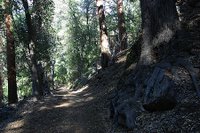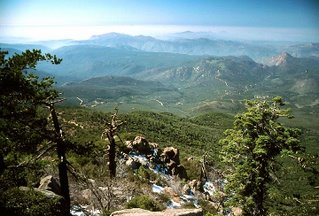History Of Cuyamaca Rancho State Park
This information was courtesy of the Cuyamaca State Park website;

Historical features date from prehistoric man through the Southern California gold rush. Indian residence in the area extends back at least 7000 years. We can still see traces of their ancient civilization within the Park where bedrock mortars mark the sites of summer camps and villages. Even the name "Cuyamaca" is a Spanish version of the name the native Kumeyaay Indians used for this place. In water-short Southern California, the Indians called the area Ah-Ha Kwe-Ah Mac, meaning approximately "the place where it rains."


Bands of Kumeyaay Indians ranged from San Diego east through the Cuyamaca and Laguna Mountains to beyond the Salton Sea in the east, and south beyond current day Ensenada in Mexico. A typical band's ideal range was a 20 mile radius from their winter home.

With the discovery of gold in Julian in 1869, the Spanish, Mexican, and American governments and settlers changed the Kumeyaay's way of life forever. Disease spread through the Kumeyaay, traditional ways of life were destroyed, and promises broken as the indians were expelled in 1875 from ancestral lands and taxed without representation. Currently there are about 20,000 Kumeyaay descendants in San Diego county, 10% of whom live on the 18 reservations which range from 6.3 to over 122,000 acres.

The Stonewall Mine opened in 1870 and started the boomtown of Cuyamaca City. Peak production at the mine occurred between 1886 and 1891 while employing over 200 workers. In 1889, Cuyamaca Dam was completed and in 1892, Stonewall mine was permanently sealed after large losses.
This information was courtesy of the Cuyamaca State Park website;
In 1923, Ralph Dyar bought the Cuyamaca Rancho and built a summer home. In 1933, he sold his property to the State, thereby creating Cuyamaca Rancho State Park. Now the park is over 25,000 acres of protected wildlife habitat, watershed, archeological sites, botanical reserve, and recreational land with roughly half of the Park classified as Wilderness area.

0 Comments:
Post a Comment
<< Home